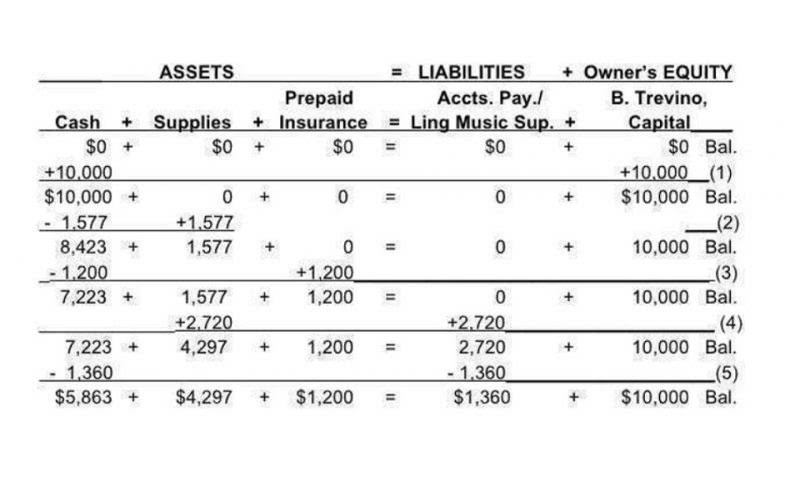Let’s look at what is reported on Coca-Cola’s Form 10-K regarding its accounts receivable. This method enhances transparency, allowing for better financial planning, informed decision-making, and reliable financial reporting, meeting the standards of accuracy and consistency upheld by GAAP. An estimate of bad debt is made at the end of the accounting period based on historical customer data. However, if you regularly come across bad debt, it might be time to look into the allowance method.

Q2. What is the difference between direct method and allowance method of accounting for bad debts?
- The bad debts expense account is debited for the actual amount of the bad debt.
- In this article, we are going to talk about the advantages and disadvantages of the direct write-off method in the areas of accounting treatment as well as process management.
- The write off amount is debited as the expense in the period approved to write off in the income statement.
- In the direct write off method example above, what happens if the client does end up paying later on?
- This can distort the financial statements and make it harder to analyze the company’s performance.
When an account is deemed to be uncollectible, the business must remove the receivable from the books and record an expense. This is considered an expense because bad debt is a cost of doing business. Part of the cost of allowing customers to borrow money, which is essentially what a customer is doing when the business allows the customer time to pay, is the expense related to uncollectible receivables. Under the allowance method, a company needs to review their accounts receivable (unpaid invoices) and estimate what amount they won’t be able to collect.

Q1. Why is the allowance method preferable to the direct write-off method?
Below is a break down of subject weightings in the FMVA® financial analyst program. As you can see there is a heavy focus on financial modeling, finance, Excel, business valuation, budgeting/forecasting, PowerPoint presentations, accounting and business strategy. When it comes to large material amounts, the allowance method is preferred compared to the direct write-off method. Direct Write Off Method & Allowance Method are the two methods to write off or expense off an asset. 2) Entry to transfer the amount of asset expense-off to the profit & loss account. In this article, we are going to talk about the advantages and disadvantages of the direct write-off method in the areas of accounting treatment as well as process management.
Credit Risk Management

When using the percentage of accounts receivable method, the amount calculated is the Bookkeeping for Consultants new balance in allowance for doubtful accounts. To implement the allowance method, companies analyze historical data on credit sales and payments, considering factors such as industry averages, customer creditworthiness, and current economic trends. Tools like aging schedules, which categorize receivables based on the length of time they have been outstanding, are instrumental in this analysis.
Tips to Reduce Your Cash Conversion Cycle
Additionally, the allowance method may result in a delay in recognizing bad debts since the estimation process is not immediate. It’s simple to use and recognizes recording transactions unpaid debts only when they are deemed uncollectible. Below, we’ll explain what this method is, how it works, and when to use it.

Because the risk to the business is relative to the number of accounts and direct write-off method the amount of cash tied up in receivables, larger companies cannot take a “wait and see” approach to capturing potential bad debts. It can lead to fluctuations in reported income, as bad debt expenses are recognized irregularly. This can make it challenging for stakeholders to assess a company’s financial performance accurately over time. The direct write-off method is a simple and straightforward way to account for bad debts. While it offers ease of use and immediate recognition of uncollectible amounts, it does not comply with GAAP due to its violation of the matching principle. Understanding the direct write-off method is crucial for small businesses or those not bound by GAAP, as it provides a clear and uncomplicated approach to handling bad debts.
To keep the revenue of both the time periods accurate, the financial reports should use the allowance method of accounting for bad debts. The allowance method offers an alternative to the direct write off method of accounting for bad debts. With the allowance method, the business can estimate its bad debt at the end of the financial year.
- Without careful monitoring, the balance in the account could grow indefinitely.
- This is another variation of an allowance method so we will use Bad Debt Expense and Allowance for Doubtful Accounts.
- The direct write-off method is the simplest method to book and record the loss on account of uncollectible receivables, but it is not according to the accounting principles.
- This way, during U.S. income tax reporting season, you can declare the debt and it is written off from your business’s total taxable income.
- Used by public and private companies that need to comply with GAAP and other accounting standards.
Accuracy of Financial Reporting
Notice how the estimated percentage uncollectible increases quickly the longer the debt is outstanding. The entry from December 31 would be added to that balance, making the adjusted balance $60,500. The percentage of sales method does not factor in the existing balance in Allowance for Doubtful Accounts.
